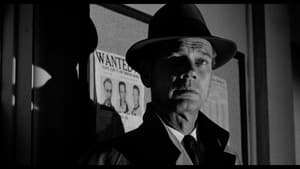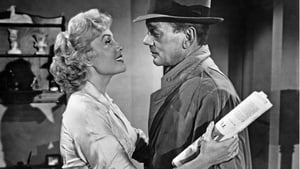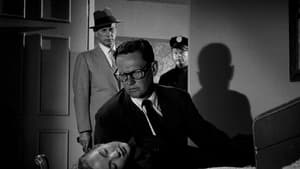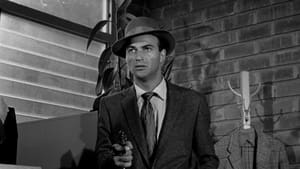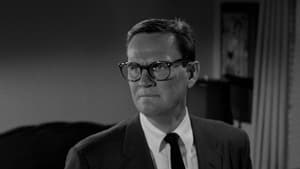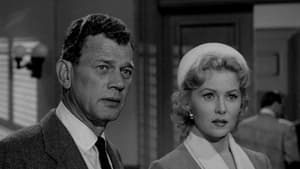Contact: [email protected]
Video Sources 0 Views
- The Killer is Loose


Synopsis
Table of Contents
ToggleThe Killer is Loose 1956: A Gripping Noir Thriller – A Review

Introduction
In the vast landscape of classic cinema, few genres possess the allure and intrigue of film noir. And nestled within this captivating realm lies “The Killer is Loose,” a taut thriller from 1956 that continues to mesmerize audiences with its gripping narrative and unforgettable characters. In this review, we delve into the significance of the film’s early colored version, exploring how colorization impacts the viewing experience and examining its role in shaping the legacy of this timeless classic.
Check The Full Colorized Movies List
Check Our Colorized Movies Trailer Channel
Understanding The Killer is Loose 1956: Director, Cast, and Genre
Directed by Budd Boetticher, “The Killer is Loose” boasts a stellar cast led by the incomparable Joseph Cotten, whose nuanced portrayal of a vengeful detective adds depth and intensity to the film’s storyline. Supported by a talented ensemble including Rhonda Fleming and Wendell Corey, Cotten delivers a masterclass in suspense and intrigue, captivating audiences with his riveting performance. Set against the backdrop of post-war America, the film epitomizes the essence of film noir, blending elements of crime, drama, and psychological thriller to create a cinematic experience unlike any other.
Exploring the World of The Killer is Loose 1956: Plot and Characters
“The Killer is Loose” unfolds against the backdrop of a botched bank robbery that sets off a chain of events leading to tragedy and betrayal. As Detective Sam Wagner (Cotten) delves deeper into the case, he becomes ensnared in a web of deceit and danger, uncovering dark secrets that threaten to consume him. Along the way, he encounters a cast of characters whose motives remain shrouded in mystery, including the enigmatic gunman Leon Poole (Corey) and his unsuspecting wife, Lila (Fleming). As the tension mounts and the stakes escalate, Wagner must confront his own demons and navigate a treacherous path to justice.
The Art of Film Colorization
Colorization, the process of adding color to black-and-white footage, has long been a subject of fascination and controversy in the world of cinema. While some purists argue that colorization detracts from the authenticity and aesthetic integrity of classic films, others see it as a means of breathing new life into old favorites and making them more accessible to modern audiences. With “The Killer is Loose,” the decision to release an early colored version opens up a dialogue about the creative possibilities of colorization and its impact on the viewing experience.
Early Colored Films: A Brief History
The history of colorization is a tale of innovation and experimentation, with filmmakers and technicians continually pushing the boundaries of visual storytelling. From early hand-tinting techniques to the advent of Technicolor and Eastmancolor, the evolution of colorization has transformed the way we perceive and engage with cinema. As technology continues to advance, so too do the possibilities for colorization, offering filmmakers new avenues for artistic expression and creativity.
The Killer is Loose 1956 and Its Early Colored Version
The decision to release “The Killer is Loose” in a colorized format represents a bold departure from convention, inviting audiences to experience the film in a fresh and vibrant new way. By adding color to Boetticher’s atmospheric direction and Cotten’s compelling performance, the early colored version breathes new life into the film, enhancing its visual impact and immersing viewers in its moody atmosphere. While some may prefer the stark contrast of black and white, the early colored edition offers a dynamic reinterpretation of the classic noir thriller, demonstrating the enduring appeal of the film across generations.
The Debate Over Film Colorization
The debate over film colorization is a reflection of broader discussions about art, technology, and cultural heritage. While proponents argue that colorization provides a valuable means of preserving and reimagining classic films for contemporary audiences, critics raise concerns about its potential to alter the original artistic vision and aesthetic integrity of the work. As the debate continues to unfold, filmmakers and audiences alike grapple with questions about authenticity, nostalgia, and the evolving nature of cinematic storytelling.
Examining The Killer is Loose 1956 as an Early Colored Film
For cinephiles and fans of classic cinema, the early colored version of “The Killer is Loose” offers a unique opportunity to experience the film in a new and exciting way. From the shadowy alleyways of Los Angeles to the sun-drenched streets of suburbia, the addition of color enhances the film’s visual palette and amplifies its emotional impact, immersing viewers in its noir-infused world. Whether viewed in its original black-and-white format or its early colored edition, “The Killer is Loose” remains a captivating testament to the power of storytelling and the enduring allure of film noir.
Influence and Legacy: The Killer is Loose 1956’s Impact on Cinema
“The Killer is Loose” has left an indelible mark on the landscape of cinema, inspiring generations of filmmakers and captivating audiences with its timeless appeal. Its influence can be seen in the countless noir thrillers that followed in its wake, as well as in the enduring popularity of Joseph Cotten’s body of work. The film’s early colored version has also contributed to its legacy, sparking conversations about the role of colorization in preserving and reimagining classic films for modern audiences.
Director’s Cinematic Legacy: Beyond The Killer is Loose 1956
Budd Boetticher’s legacy extends far beyond “The Killer is Loose,” with the director leaving an indelible mark on the world of cinema. His innovative storytelling techniques, keen eye for detail, and distinctive visual style have earned him a place among the pantheon of great filmmakers. Boetticher’s influence can be seen in the work of directors who have been inspired by his unique approach to storytelling, from Quentin Tarantino to the Coen Brothers. His films continue to be studied, celebrated, and cherished by cinephiles around the world, ensuring that his legacy will endure for generations to come.
Themes Explored in The Killer is Loose 1956
At its core, “The Killer is Loose” is a film about the human condition and the lengths to which people will go to protect the ones they love. Themes of betrayal, redemption, and moral ambiguity pervade the narrative, as characters grapple with the consequences of their actions and confront the darker aspects of human nature. Through its richly drawn characters and suspenseful plot, the film offers a compelling exploration of the human psyche and the complexities of interpersonal relationships.
Reception and Controversy Surrounding The Killer is Loose 1956
Upon its release, “The Killer is Loose” received widespread critical acclaim, with praise for its gripping storyline, atmospheric direction, and standout performances. Audiences were captivated by the film’s tension-filled narrative and moody atmosphere, making it a commercial success at the box office. However, the decision to release the film in a colorized format sparked controversy among some cinephiles, who questioned the necessity of altering the original artistic vision. Despite these concerns, “The Killer is Loose” remains a beloved classic of the noir thriller genre, revered by critics and audiences alike for its timeless storytelling and enduring impact.
Where to Watch The Killer is Loose 1956 Online
For those eager to experience the gripping suspense of “The Killer is Loose,” the film is available for streaming on a variety of platforms, including Amazon Prime Video, iTunes, Google Play, and YouTube Movies. Whether viewed in its original black-and-white format or its early colored edition, “The Killer is Loose” promises to captivate audiences with its gripping narrative, stunning visuals, and unforgettable performances.
FAQs About The Killer is Loose 1956
Q: Is “The Killer is Loose” based on a true story?
A: While the film is a work of fiction, it draws inspiration from real-life events and explores themes of crime, betrayal, and moral ambiguity.
Q: Who are the main actors in “The Killer is Loose”?
A: The film stars Joseph Cotten as Detective Sam Wagner, Rhonda Fleming as Lila Wagner, and Wendell Corey as the enigmatic gunman Leon Poole.
Q: What is the significance of the film’s early colored version?
A: The early colored edition of “The Killer is Loose” offers a fresh perspective on the classic noir thriller, inviting viewers to rediscover the film in a whole new light and sparking conversations about the role of colorization in preserving and reimagining cinematic classics.
Conclusion
In conclusion, “The Killer is Loose” stands as a testament to the enduring power of classic cinema, captivating audiences with its timeless storytelling, unforgettable characters, and stunning visuals. Whether viewed in its original black-and-white format or its early colored edition, the film continues to resonate with audiences of all ages, offering a gripping exploration of morality, ambition, and the human condition. As debates about film colorization continue to unfold, “The Killer is Loose” remains a shining example of the artistry and innovation that define the medium of cinema, ensuring its legacy will endure for generations to come.
